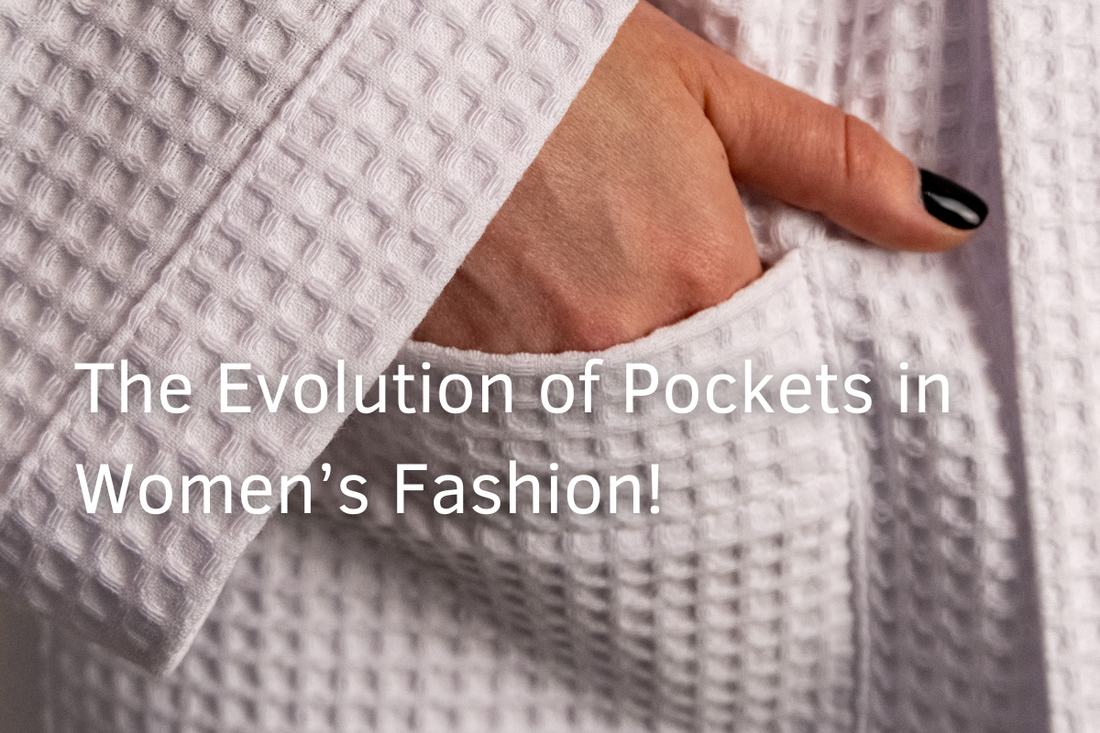
Pockets in Women's Clothing | The History and Evolution | Rimore Store
Share
The Evolution of Pockets in Women’s Clothing!
The world of fashion witnesses numerous trends that come and go frequently. Among these numerous trends, there are a few elements that have always sparked a conversation. One such element is the inclusion of pockets in women’s clothing. You might find pockets to be a simple and functional idea today. However, in earlier times, pockets had numerous societal norms associated with them. Yes, these simple elements have a rich and complex history that reveals much about the intersection of feminism and fashion.
Origin of Pockets in Women's clothing as Separate Accessories
Before discussing the presence of pockets in women's clothing, let’s go back to the 17th century when pockets were not set into the clothing. During this time, pockets were considered as an accessory separate from clothing. Men and women had small pouches around the waist just below the outer layer of clothing attached by a string.
Fashion for women in the 17th century was meant to highlight the principle of openness and covering up. The layers of clothes enabled women to conceal their pockets while making them easily accessible. But at the same time, it imposed certain restrictions. To access these pockets, women had to lift the outer garment’s bottom, making it uncomfortable and non-practical for them. Not only did this design continue the portrayal of women as timid, retiring creatures, but it also simultaneously restricted their freedom.
The late 17th century witnessed inclusion of pockets in men’s clothing. However, they were still a separate accessory for women even. This discrimination anticipates the emergence of gender disparity in fashion, where menswear was intended for functionality and enhanced mobility. On the other hand , women's apparel was all about appearance and societal norms.
The Transition to Stitch-On Pockets
Moving into the second half of the 18th century, fashion started to evolve, as did the very idea of pockets. In the last years of the 18th century and the initial years of the 19th century, women’s clothes again changed their general form and became tightly fitted. This made it impossible to wear large pockets. It marked the demise of pockets being a separate accessory and the rise of sew-in pockets. However, the change was accompanied by some turbulence and was not evident across the globe.
The rise of sew-in pockets was definitely good news until their size came to notice. As the dresses were tightly fitted, these pockets were quite tiny and impractical. However, the rise of Empire waist dresses of the Regency era offered some relief. Their high waistlines and lightweight fabrics left little room for functional pockets. However, instead of adorning these dresses, women were encouraged to carry small decorative handbags, known as reticules. They were yet again a non-practical idea for women. This is because these handbags were only almost the size of a hand and could accommodate only the small essentials.
Disappearance of Pockets in Women's Clothing in the Victorian Era
The Victorian era, spanning from the mid-19th century to the early 20th century, saw a further decline in the practicality of women’s clothing. The voluminous dresses of this era left little or no room for functional pockets. This period marked the disappearance of pockets in women’s clothing and prioritised aesthetics over functionality. This disappearance marked the era’s reflection of the limited roles women were expected to play in society.
Fight for Functional Fashion in the 20th Century.
Women’s fashion underwent significant changes in the 20th century. It was driven partly by the broader social and political movements of the time. With women fighting for their rights in society, this period also marks the evolution of women's clothing. During this time, the inclusion of pockets became a symbol of women’s liberation.
These changes were specifically witnessed around World War I when women took over the roles that had traditionally been reserved for men. This change resulted in the need for women's clothing to be more practical. This is why, in 1920, the rise of flapper dress was witnessed. Although these dresses lacked pockets, they represented a break from the restrictive fashions of the past. It marked a move towards greater freedom and autonomy for women.
In the 1930s and 1940s, pockets in women's clothing were introduced once again. However, it was short-lived as the post-war period saw a return to more traditional gender roles and, with it, a shift back to more decorative and less functional clothing for women. This soon changed in the 1950s when top clothing labels introduced functional pockets in women's clothing.
Pockets in Women's clothing Becoming a Feminist Issue in the Modern Day
The late 20th and early 21st centuries have seen a resurgence of interest in the inclusion of pockets in women’s clothing. This resurgence is primarily driven by a broader recognition of the gender disparities in fashion. Women see a lack of functional pockets in their clothing as a symbol of the ongoing struggle for gender equality. This results in a rising demand for better design and functionality in their garments.
The rising demand is leading to more thoughtful and practical clothing for women. This gives rise to pockets being an attractive element of women’s fashion. However, the struggle to make functional pockets common in women’s clothing still continues.
In the End
Women’s fashion and clothing is evolving rapidly. However, the struggle to make clothing comfortable, practical and beautiful for women still continues. Rimore takes a step forward to end this struggle by contributing to the rise of gender-neutral fashion. Our brand offers the most comfy clothes for women, including functional pockets. Explore our collection today to enter the world of gender equality in fashion.
